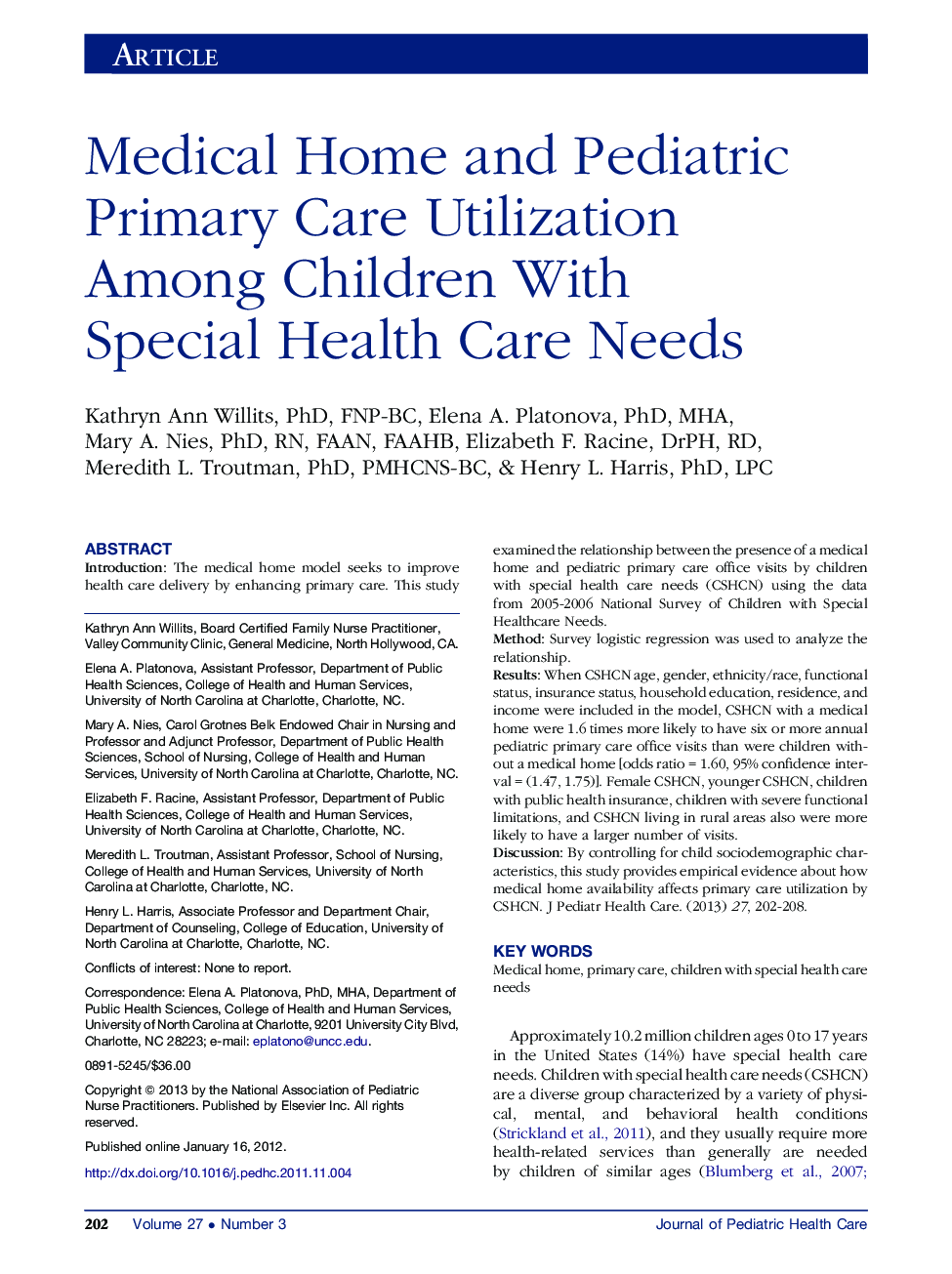| کد مقاله | کد نشریه | سال انتشار | مقاله انگلیسی | نسخه تمام متن |
|---|---|---|---|---|
| 2661960 | 1140458 | 2013 | 7 صفحه PDF | دانلود رایگان |

IntroductionThe medical home model seeks to improve health care delivery by enhancing primary care. This study examined the relationship between the presence of a medical home and pediatric primary care office visits by children with special health care needs (CSHCN) using the data from 2005-2006 National Survey of Children with Special Healthcare Needs.MethodSurvey logistic regression was used to analyze the relationship.ResultsWhen CSHCN age, gender, ethnicity/race, functional status, insurance status, household education, residence, and income were included in the model, CSHCN with a medical home were 1.6 times more likely to have six or more annual pediatric primary care office visits than were children without a medical home [odds ratio = 1.60, 95% confidence interval = (1.47, 1.75)]. Female CSHCN, younger CSHCN, children with public health insurance, children with severe functional limitations, and CSHCN living in rural areas also were more likely to have a larger number of visits.DiscussionBy controlling for child sociodemographic characteristics, this study provides empirical evidence about how medical home availability affects primary care utilization by CSHCN.
Journal: Journal of Pediatric Health Care - Volume 27, Issue 3, May–June 2013, Pages 202–208